‘Get Rid of Them’: A Statue Falls as Britain Confronts Its Racist History
Mr. Johnson claimed the protests, though largely peaceful, had been “subverted by thuggery
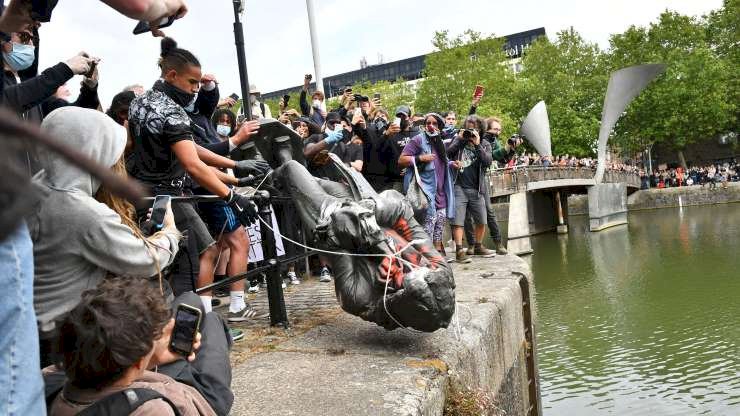
With a mix of pent-up fury and sudden elation, the protesters who toppled a bronze statue of the 17th-century slave trader Edward Colston in Bristol, England, on Sunday recalled the angry crowds that brought down statues of Saddam Hussein, Stalin, and even King George III.
But when these demonstrators dumped the monument of Colston into Bristol Harbor with a splash, they also forced Britain to consider how to confront its racist history at a moment when many of the same questions are being asked in the United States. So a more precise parallel to Sunday’s events, perhaps, is not Saddam or Stalin, but the removal of statues of Confederate generals in city squares across the American South.
Now the protesters are turning their sights on statues of Cecil Rhodes, an even more potent symbol of Britain’s racist colonial past.
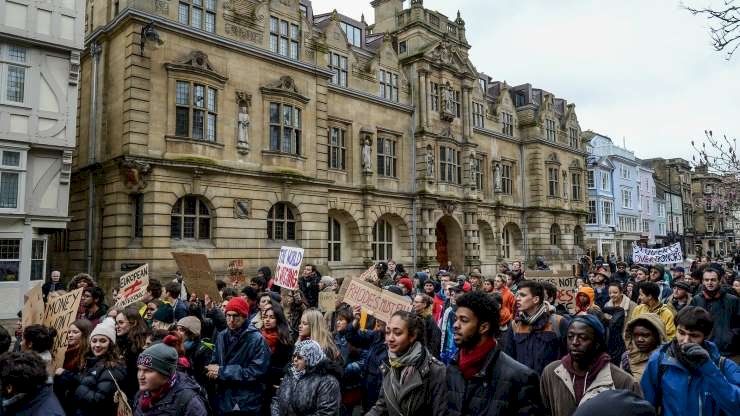
“For the last three years, we’ve all had this debate about statues in Britain,” said Afua Hirsch, a columnist for The Guardian who writes and speaks about race in Britain. “It feels as if now there is not even a debate — people are just acting. That is inspired by the movement we’re seeing in America.”`
The toppling of the statue capped a clamorous, occasionally violent weekend of protests in London and other parts of Britain. They began as a show of solidarity with Americans protesting police brutality after an officer killed George Floyd, a black man in Minneapolis, by kneeling on his neck for nearly nine minutes.
The strife has become a test for Prime Minister Boris Johnson, whose first instinct has been to promise a swift return to law and order.
Mr. Johnson claimed the protests, though largely peaceful, had been “subverted by thuggery.” His home secretary, Priti Patel, said “scenes of lawlessness are completely unacceptable,” and vowed to double prison terms for people convicted of attacking the police and other emergency workers during the demonstrations. She also lamented that people were marching when they should be at home social distancing to curb the spread of the coronavirus.
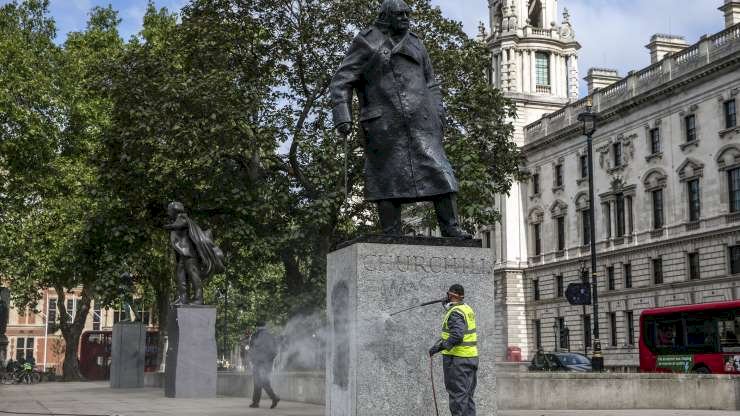
Far from quelling the unrest, some observers said the government’s tough language would feed frustrations, particularly among black people and other ethnic minorities in Britain who have protested before, including in 2011 after the police shot and killed Mark Duggan, a 29-year-old black man, whose death led to destructive protests across the country.
As in the United States, the coronavirus has disproportionately affected black people and other minorities. The three-month lockdown, from which Britain is only now gingerly emerging, has suffocated the economy and left many of the people who are demonstrating furloughed and uncertain about the future.
Unlike in the United States, British police are not equipped with military-style gear or heavy weapons. Many do not carry firearms. After years of budget cuts under the austerity policies of Conservative governments, police in London are more conspicuous by how rare they are than by their brute force.
Still, there is a well-documented record of black men dying in police custody in Britain, according to Ms. Hirsch, who said the officers are rarely brought to justice. Black men are three times more likely than white men to die at the hands of the police, according to experts; they are also overrepresented in British prisons.
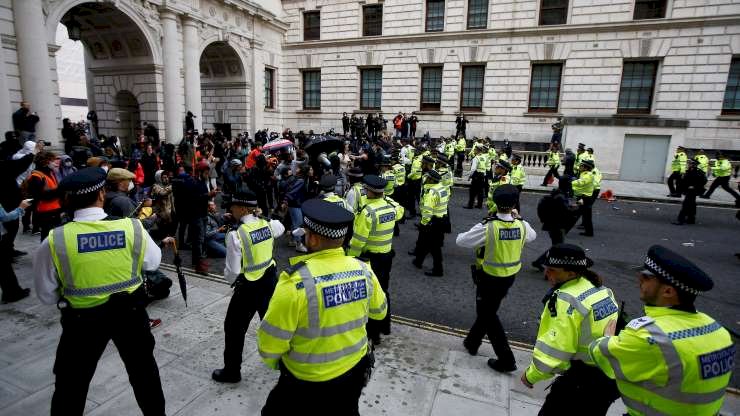
Some of that distrust was on display in London on Sunday. Though most protesters kept to peaceful chants such as “I can’t breathe” — echoing some of Mr. Floyd’s dying words — a few lobbed bottles and flares at the police who were trying to keep them away from 10 Downing Street, the prime minister’s residence.
Protesters spray-painted graffiti on the Cenotaph, a revered World War I memorial, while one clambered up on its pedestal and tried unsuccessfully to light a Union Jack on fire. Another defaced a statue of Winston Churchill, crossing out his name and painting “was a racist” underneath it.
Scotland Yard said Monday that 35 police officers were injured in the clashes. One suffered a head wound and another a shoulder injury after a bottle was thrown. The police arrested 36 people before the crowds were dispersed after midnight.
“The violent criminality we saw is disgraceful and will have been very frightening for others,” said Cressida Dick, the Commissioner of the Metropolitan Police.
READ ALSO:
George Floyd murder suspect Derek Chauvin has bail set at $1.25m

The social unrest brought predictable figures out of the woodwork, including Nigel Farage, the right-wing Brexit leader, who has been relatively muted since Britain formally left the European Union in January.
“If Boris Johnson won’t lead and stand up for the country, as its symbols are trashed, then people will start taking it into their own hands,” he wrote on Twitter. “Full on race riots are now possible.”
In Bristol, by contrast, the police stood by when protesters began throwing ropes around the statue of Edward Colston. The protesters tore down the statue and danced on top of it before rolling it down the street to the waterfront, where they pushed it in.
Bristol’s mayor and police chief expressed regret at how the statue was removed. But they shed no tears for the desecration of Colston’s memory.
A merchant whose name is on schools and hospitals in Bristol, Colston profited richly from slavery, transporting at least 80,000 people from West Africa to the Caribbean. Almost 20,000 of them died on the sea voyages.
Critics have campaigned for years to take down the bronze statue, which was erected in 1895. Now that it is gone, they want to replace it with a statue of Paul Stephenson, a black worker who led a boycott of the Bristol Bus Company in 1963 to force it to end discriminatory hiring practices against minorities.
“Whilst I am disappointed that people would damage one of our statues, I do understand why it’s happened,” Superintendent Andy Bennett, of Somerset and Avon police, told the BBC. “It’s very symbolic.”
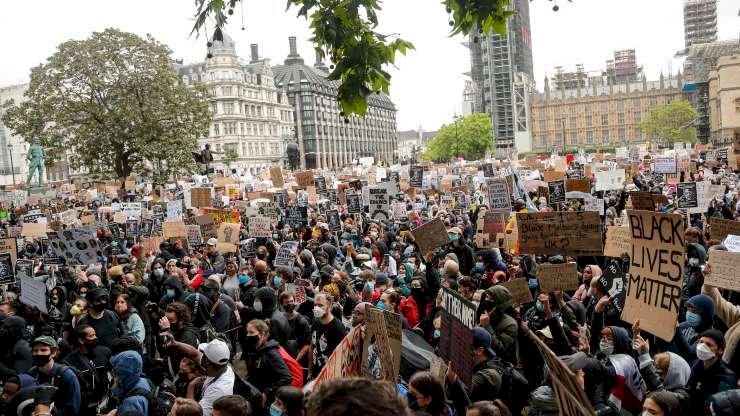
Bristol’s mayor, Marvin Rees, said the statue was an “affront” to the city. Mr. Rees, who is the son of a Jamaican father and a British mother, said the city would eventually fish the statue out of the water and likely put it in a museum.
Colston’s ignominious fate may not bode well for a statue of Cecil Rhodes that sits uneasily at the Oxford University college where he studied. Students have campaigned for years to pull down the statue of Rhodes, whose white supremacist views are considered by some to be a precursor to apartheid.
The college refused, in part because of resistance led by alumni, who argued removing Rhodes would erase history. Now a new generation of students say they will hold a “Rhodes Must Fall” rally in Oxford on Tuesday.
Britain, historians said, has come to this debate more slowly than the United States because the country’s legacy of racism largely occurred outside the country. There were no plantations with slaves-owning proprietors in England. Colston endowed many institutions in his hometown, some of which are now weighing what to do about this legacy.
Britain’s geographic distance from colonialism and the slave trade has allowed some Britons to claim their country is not, at heart, racist. But the removal of statues of Confederate figures like Robert E. Lee in the United States has made those arguments harder to sustain.
“These monuments are put up to revere these figures, and if we say we want a non-racist society, of course, we have to get rid of them,” said Kehinde Andrews, a professor of black studies at Birmingham City University. “Statues are not about history; statues are about a certain version of history.”
New York Times





































